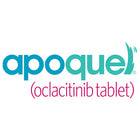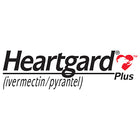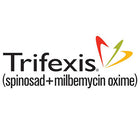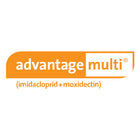Zactran Injection for Cattles
A Potent Solution for Respiratory Health
Zactran is a highly effective veterinary antibiotic injection formulated specifically to treat bovine respiratory disease (BRD) in cattle, including both beef and non-lactating dairy cattle.
Leveraging the power of gamithromycin, Zactran targets critical BRD-related pathogens, such as Mannheimia haemolytica, Pasteurella multocida, Histophilus somni, and Mycoplasma bovis.
Known for its fast-acting properties, Zactran delivers a one-time dose that rapidly reduces infection and supports quicker recovery times, making it a top choice for farmers aiming to maintain herd health and minimize downtime caused by respiratory illness.
What Are the Benefits of Zactran Injection for Cattle?
- Fast-Acting, One-Dose Treatment: Zactran starts working quickly, providing relief within hours of administration, reducing disease progression with a single injection.
- Extended Efficacy: This injection maintains effective antibiotic levels in the cattle’s system for up to 10 days, supporting continuous protection.
- Broad-Spectrum BRD Protection: Effectively targets the key bacterial pathogens responsible for BRD, minimizing severe symptoms and promoting recovery.
- Ease of Use: A single, subcutaneous injection ensures a straightforward administration process, saving time and reducing handling stress for cattle.
- Enhanced Health Outcomes: By directly addressing BRD pathogens, Zactran helps improve overall health outcomes, supporting optimal performance and growth.
Dosage and Administration for Zactran Injection
-
Dosage: Administer Zactran as a subcutaneous injection in the neck, at a dose of 2 mL per 100 kg (1.8 mL per 100 lbs) of body weight.
- If the required dose exceeds 10 mL, divide it to prevent more than 10 mL at any single injection site.
- Guidance: Always consult your veterinarian for precise dosing tailored to your cattle's specific health needs.
How to Use Zactran Safely: Warnings and Precautions
- Species-Specific Use: Designed exclusively for beef and non-lactating dairy cattle.
-
Withdrawal Periods:
- Meat: Cattle should not be slaughtered for meat within 35 days of administration.
- Milk: Not approved for use in lactating dairy cattle.
- Pregnancy and Reproduction: The effects on reproduction, pregnancy, or lactation have not been fully determined. Consult a veterinarian for advice on use in breeding cattle.
- Possible Side Effects: Some cattle may experience mild, localized tissue reactions at the injection site. Temporary behavioral changes may also occur. If adverse reactions are noted, consult your veterinarian.
What Are the Ingredients in Zactran?
- Active Ingredient: Gamithromycin, an advanced antibiotic specifically formulated for effective BRD treatment.
- Type: Injectable solution
What are the Side Effects of Zactran Injection?
While Zactran Injection is generally safe and effective for treating BRD in cattle, some animals may experience side effects. The most common reaction is mild, localized swelling at the injection site, which typically resolves on its own. Some cattle may also show temporary behavioral changes following treatment.
Severe adverse effects are rare, but if you observe persistent swelling, unusual behavior, or any other concerning symptoms, consult a veterinarian immediately for guidance and further care.
Storage Guidelines for Optimal Efficacy
- Temperature: Store Zactran at or below 77°F (25°C) with acceptable short-term temperature variations between 59–86°F (15–30°C).
- Shelf Life: After the first puncture, use within 18 months.
Shipping & Returns
Shipping Policy: We offer all types of shipping options (Ground, Express, Priority, International) depending on the urgency of the product requirements. To know about our shipping policy in detail, click here.
Refund policy: If you face any issue with our product and want to return it, read our refund policy carefully.
FAQs - Zactran (Gamithromycin) Injection for Cattle
What is Zactran Injection used for?
Zactran Injection is used for the treatment of bovine respiratory disease (BRD) in cattle. This condition, often caused by bacteria such as Mannheimia haemolytica, Pasteurella multocida, Histophilus somni, and Mycoplasma bovis, can lead to severe respiratory issues. Zactran’s fast-acting, single-dose formulation effectively targets these pathogens, helping to alleviate symptoms, control the infection, and support rapid recovery in both beef and non-lactating dairy cattle.
Can Zactran prevent BRD from recurring in cattle?
While Zactran treats current BRD infections effectively, it does not prevent future occurrences. However, by eliminating active bacterial infections, it can help reduce the spread of pathogens within herds, indirectly lowering the risk of recurring cases. Management practices and herd health protocols are also essential for long-term BRD prevention.
How does Zactran compare to other antibiotics used for cattle?
Zactran’s gamithromycin formulation provides a unique balance of fast action and extended protection, lasting up to 10 days from a single injection. This reduces handling time and stress for cattle compared to multi-dose antibiotics. Additionally, its specific targeting of major BRD-causing bacteria makes it particularly effective for BRD management.
Is there a specific age requirement for cattle to receive Zactran?
Zactran is approved for use in beef and non-lactating dairy cattle without a specific age restriction. However, it is not intended for calves processed for veal or for lactating dairy cattle 20 months or older. Always consult your veterinarian for guidance on administering Zactran to younger or pregnant animals.
How does Zactran help with herd health management?
Zactran supports herd health by efficiently treating BRD, reducing symptoms, and minimizing the spread of infection among cattle. By providing a quick, single-dose solution, it also helps reduce the need for frequent handling, which can decrease stress and support the overall welfare of the herd.
Are there any restrictions on feeding cattle treated with Zactran?
There are no specific feed restrictions with Zactran; however, it’s essential to observe the withdrawal period before slaughter. This ensures antibiotic residues are cleared from the cattle’s system, meeting food safety standards. Consult a veterinarian if you have questions about feeding practices with antibiotic treatments.
Can Zactran be used alongside other treatments or vaccines?
Yes, Zactran can generally be used alongside other vaccines and treatments, but it’s best to discuss any combined treatments with a veterinarian. This ensures compatibility and effectiveness, as well as safety for cattle when treating multiple health issues or conducting routine vaccinations.
What should I do if a cow has an adverse reaction to Zactran?
If you observe any unusual reactions, such as excessive swelling or behavioral changes, contact your veterinarian immediately. Mild reactions like localized swelling may occur, but severe or persistent symptoms should be assessed professionally to ensure cattle health and safety.
Is Zactran effective for treating other infections in cattle?
Zactran is specifically indicated for treating BRD and is not approved for other bacterial infections. While its antibiotic properties may target certain bacteria, always consult a veterinarian before using it for conditions outside of BRD to ensure appropriate treatment and adherence to safety protocols.
How long does it take for Zactran to be fully eliminated from a cow's system?
Zactran has an 18-day withdrawal period for meat to ensure that gamithromycin is fully eliminated from the animal's system, adhering to food safety regulations. This time frame allows any antibiotic residues to clear, making treated cattle safe for consumption within regulatory guidelines.
Clinical Research:
https://ec.europa.eu/health/documents/community-register/2011/20110412101328/anx_101328_en.pdf
https://dailymed.nlm.nih.gov/dailymed/fda/fdaDrugXsl.cfm?setid=4ad34f81-65e1-4858-8928-50af8bcb3db9
Recommended for the Zactran (Gamithromycin) Injection for Cattle 150 mg/ml
Product title
Vendor
19,99 lei | 24,99 lei
Product title
Vendor
19,99 lei | 24,99 lei
Product title
Vendor
19,99 lei | 24,99 lei
Product title
Vendor












